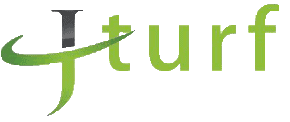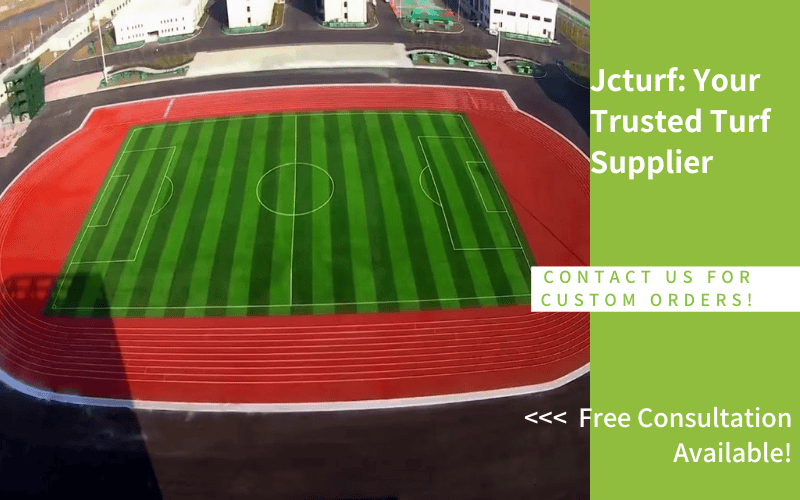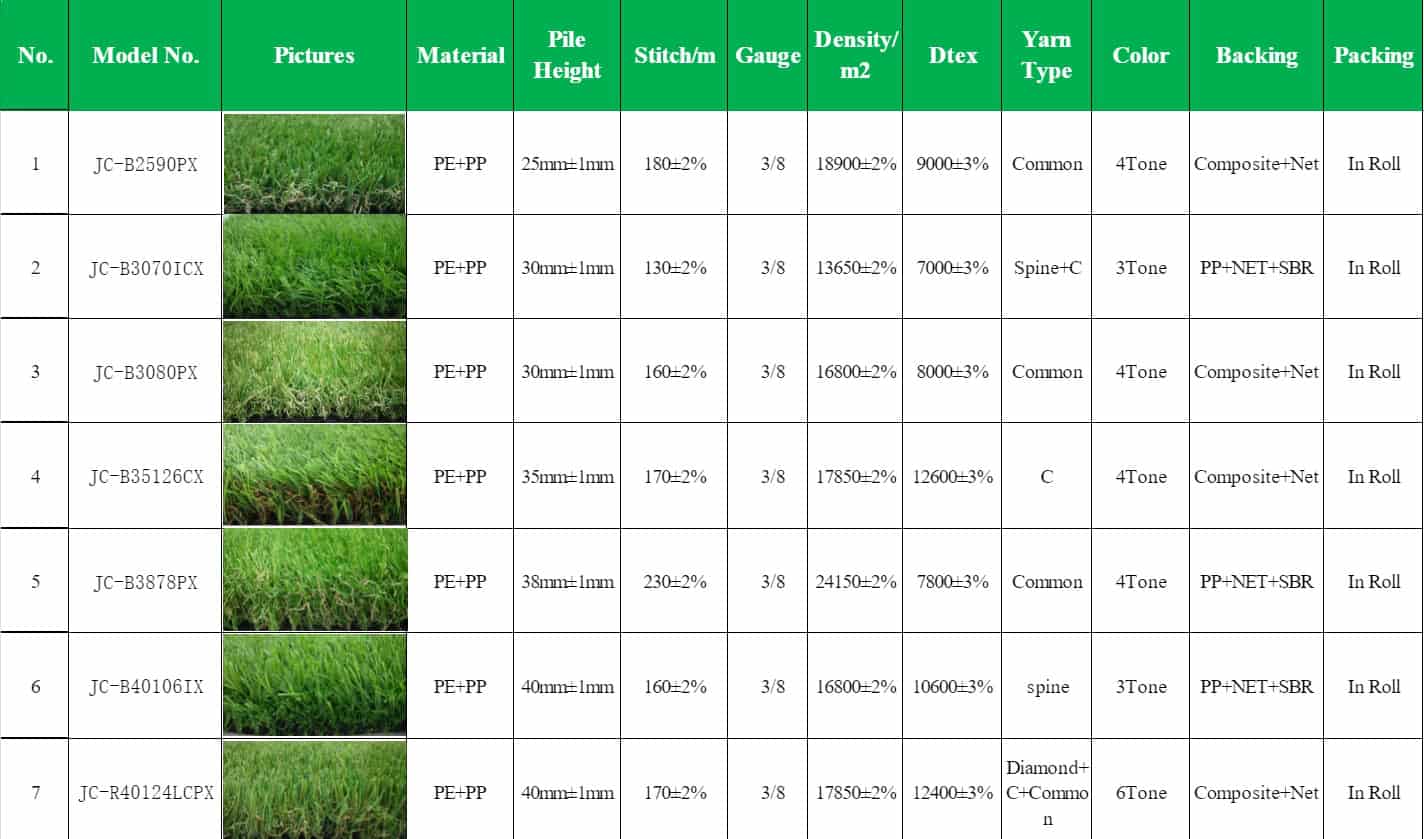The cost of an artificial turf football field typically ranges from $500,000 to $2,000,000, depending on size, material quality, and usage needs. For a standard 80,000-square-foot field, prices are $13-$32 per square foot, including installation, with high-durability materials for intensive use further increasing costs. Most projects in North America cost between $640,000 and $2,000,000, with budget options starting at $500,000.
While the initial investment is high, artificial turf offers long-term value, supporting 2,500-3,000 hours of annual use, 3-4 times more than natural grass. Its durability and versatility for multi-sport use enhance cost efficiency, though adjustments like infill systems may slightly affect the budget.
Artificial Turf Football Field Installation Cost
When planning to install a turf football field, it’s crucial to understand the breakdown of the costs involved. Here’s a detailed overview of the costs you can expect:
How Much Is a Turf Football Field Per Square Foot?
The cost of a turf football field typically ranges from $8.00 to $20.00 per square foot, encompassing the turf material, base preparation, drainage, installation labor, and infill materials. Prices vary based on factors like turf quality, site conditions, and installation complexity. For a standard-sized football field of about 80,000 square feet, the total cost can range from $640,000 to $1,600,000 or more, depending on these elements.
Site Preparation and Base Construction
Building an artificial turf soccer field starts with site preparation and base construction, a critical phase directly impacting the field’s quality, durability, and lifespan. This stage typically accounts for 35% to 50% of the total budget and typically falls between $4 and $10 per square foot.
Site Clearing: For undeveloped land, clearing costs are relatively low, but removing old turf, debris, or obstacles increases expenses. On average, this step costs $1 to $3 per square foot.
Base Construction: A stable base is built using crushed stone or similar materials to ensure durability and support drainage. Laser grading is often used to achieve a perfectly level surface, with costs ranging from $2 to $5 per square foot.
Drainage System: A proper drainage system, including a permeable layer, pipes, and edge channels, prevents water accumulation and protects the turf. Costs typically range from $1 to $2 per square foot, with higher costs for complex systems in rainy regions.
Artificial Turf System
The artificial turf system is the centerpiece of a soccer field, directly influencing its performance, durability, and appearance. This phase accounts for 30%-45% of the total budget, with costs typically ranging from $4 to $9 per square foot.
Turf Types
- Monofilament Fiber: Offers a natural grass-like appearance but comes with higher costs.
- Slit-Film Fiber: Designed for durability, making it ideal for high-traffic fields.
- Hybrid Systems: Combines the advantages of monofilament and slit-film fibers, balancing aesthetics and durability.
Turf Height and Density: The height of the turf and the density of the fibers directly impact both durability and price. Taller and denser turf provides better performance but increases costs.
Backing System: The backing system provides stability and supports drainage. High-quality backing ensures the turf remains in place and performs well under various conditions.Additional Technologies: Optional features like antimicrobial treatments for hygiene or cooling technologies to reduce surface temperature can further enhance the turf system but add to the overall cost.
Base and Infill Costs
Once the turf is installed, the base layer and infill are critical for ensuring the field performs well and lasts. These two elements are essential for providing stability, drainage, and impact absorption.
- Base Layer: This layer, which supports the turf and ensures proper drainage, generally costs around $4.00 per square foot. Proper preparation of the base layer is key to a successful turf field installation, as it prevents water buildup and creates a smooth surface for play.
- Infill: The infill material, which is spread over the turf fibers to mimic the feel and bounce of natural grass, typically costs between $6.00 to $10.00 per square foot. The choice of infill—such as rubber or natural materials like cork—will affect the final price. Rubber is more affordable, while natural options like cork offer higher performance but come at a premium.
Installation Costs
In addition to the material costs, the actual installation of the turf field is another major factor in the overall price. The expenses associated with labor and equipment may fluctuate based on the intricacy of the site and the specific region. Typically, the installation costs range between $8.00 and $20.00 per square foot. The final cost within this range will depend on:
- Site Preparation: More complex sites, requiring grading or additional foundation work, will increase labor costs.
- Installation Method: The method of laying the turf and securing it to the base will also influence the cost.
Total Project Cost
When you combine all of these individual costs, the total cost for your turf football field will vary depending on several factors:
| Category | Cost per Square Foot |
| Site Preparation & Base Construction | $4 – $10 |
| – Site Clearing | $1 – $3 |
| – Base Construction | $2 – $5 |
| – Drainage System | $1 – $2 |
| Artificial Turf System | $4 – $9 |
| – Turf Types | Varies |
| – Turf Height & Density | Varies |
| – Additional Technologies | Optional |
| Base and Infill Costs | $10 – $14 |
| – Base Layer | $4.00 |
| – Infill | $6.00 – $10.00 |
| Installation Costs | $2 – $7 |
By considering all these components—turf material, base layer, infill, and installation—you can get a clear picture of what your artificial turf football field installation will cost. Typically, for a standard-sized football field, the total cost can range from $500,000 to $2,000,000.
Additional Costs and Considerations
Custom Features (Logos, End Zones, etc.)
Customizing your turf football field with logos, end zone designs, or branding can add significant costs. These features require additional planning and design work. Typically, custom features like logos or specific designs can cost between $5,000 and $20,000 or more, depending on complexity. While these add to the cost, they can enhance the field’s identity and professional appearance, making it a worthwhile investment for many organizations.
Ancillary Costs (Fencing, Lighting, etc.)
In addition to the turf, several infrastructure elements are needed to complete your football field. These include:
- Goalposts: Typically ranging from $2,000 to $10,000 per pair.
- Lighting Systems: LED lighting for night games can cost between $120,000 and $400,000, depending on the number of poles and field size.
- Scoreboards: Simple digital scoreboards start at $5,000, while advanced video screens can exceed $50,000.
- Fencing and Safety Nets: Costs range from $15,000 to $50,000, depending on the materials and coverage area.
- Spectator Seating: Basic bleachers may cost $20,000 to $50,000, while larger seating installations for events can exceed $100,000.
- Branding Designs: Adding custom logos or patterns to the turf typically costs $5,000 to $20,000, depending on the complexity and size.
These additional costs can significantly impact the total budget, so it’s essential to factor them in when planning your project.
How much does it cost to maintain a grass football field?
Though you won’t need to mow, water, or fertilize your turf, regular maintenance is still essential to ensure it stays in good shape.
- Regular Cleaning: Removing debris like leaves and dirt, along with brushing the turf to keep fibers upright, is essential for maintaining appearance and performance. This typically costs $1,000 to $3,000 per year.
- Infill Inspection and Replenishment: Infill materials, such as rubber or sand, can settle over time, requiring regular inspections and top-offs to maintain a level surface and proper shock absorption. Annual costs range from $1,500 to $4,000.
- Repairing Seams or Fiber Damage: Seams can separate, and fibers may get damaged due to heavy use. Timely repairs ensure safety and prevent further deterioration, costing $500 to $2,000 per year.
- Deep Cleaning: Contaminants like bacteria and mold can accumulate, especially in humid or high-traffic areas. Deep cleaning removes these pollutants and costs $1,000 to $3,000 annually.
- Water Mist Cooling (Optional): In hot climates, cooling systems help reduce turf temperatures, enhancing player comfort. This optional feature adds $1,000 to $3,000 per year.
Altogether, you should expect to spend around $5,000 – $15,000 per year on routine football field maintenance costs. Regular upkeep not only keeps the field looking good but also extends its lifespan, preventing more costly repairs down the line.
Replacement Costs of Football Turf
Artificial turf typically lasts 8 to 15 years, depending on usage frequency and maintenance quality. When replacement is required, the process involves several key steps, with total costs ranging from $350,000 to $700,000:
Old Turf Removal: The existing turf must be carefully removed to avoid damaging the underlying base. This step, including labor and equipment, generally costs between $30,000 and $60,000.
Disposal of Old Turf: Disposing of the old turf, including transportation to a recycling facility or landfill, typically adds $10,000 to $30,000 to the overall expense.
Surface Preparation: Before installing new turf, the base layer must be inspected, repaired, or leveled to ensure proper drainage and durability. This preparation work usually costs $20,000 to $50,000.
New Turf Installation: Installing the new turf, including materials, infill, and labor, is the largest expense, ranging from $290,000 to $560,000.
Proper planning and maintenance can help extend the lifespan of the turf, reducing the frequency of such replacements.
How long does a turf field last?
Artificial turf is built to last, but like all surfaces, it has a limited lifespan. Typically, a well-maintained turf field lasts between 8 to 10 years. After that, the performance of the turf can begin to decline, especially in high-use areas such as the center of the field and goal areas.
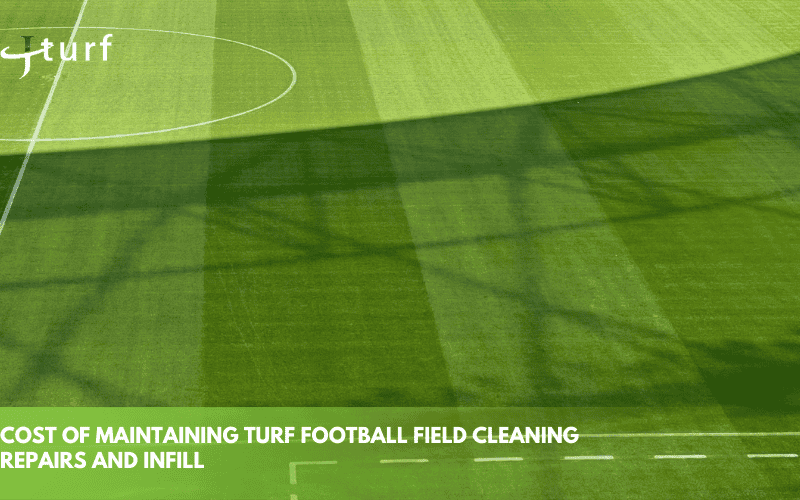
Factors Affecting the Cost of Installing a Turf Football Field
1. Field Size and Layout
The size of your turf football field has a major impact on the overall cost. Larger fields naturally require more turf material, a bigger base layer, and more labor for installation. For example, a full-sized football field, which measures approximately 360 feet by 160 feet, will be significantly more expensive than a smaller practice field.
- Standard Football Field: Typically, this is the largest project, requiring the most materials and labor.
- Smaller Fields: These could be for practice or multi-purpose use and are more affordable, but the cost per square foot can sometimes be higher due to smaller economies of scale.
This means that if you’re looking at building a larger field, be prepared for the corresponding increase in costs. However, smaller projects, while cheaper overall, may not offer the same cost-efficiency in terms of material and labor.
2. Turf Quality and Materials
The selection of turf you make exerts a substantial influence on the determination of the ultimate cost. Here’s what you should consider:
- Turf Material: High-quality synthetic turf typically costs between $5 to $11 per square foot. The fiber type, length, and density of the grass fibers contribute to the price variation.
- Infill: Materials like rubber granules, sand, or more environmentally-friendly options (e.g., cork) influence both the feel and the cost of the field. Rubber infill is cheaper, while natural infills can cost more ($6 to $10 per square foot).
- Custom Turf Solutions: Some fields may require specific features, like longer fibers for extra durability or customized designs, which can raise the price.
Choosing premium materials may increase your initial investment, but it can also enhance the field’s performance and longevity. For example, high-quality turf requires less maintenance and provides better traction and durability.
3. Base Layer and Drainage System
The base layer and drainage system are critical components that affect both the performance and cost of your turf football field. These elements ensure proper water drainage, preventing water pooling on the field and keeping it playable in all weather conditions.
- Base Layer: The cost for this foundational element typically runs around $4 to $5 per square foot. It is of great importance in offering a stable foundation upon which the turf can be laid.
- Drainage System: A quality drainage system is key for avoiding water buildup, which could otherwise lead to a soggy and unplayable field. The installation expense fluctuates based on the intricacy of the system and the characteristics of the local soil.
These systems might not be visible once the field is installed, but they are necessary for maintaining your turf field in the long term.
4. Labor and Installation Costs
The cost of labor can vary depending on where your field is located. Urban areas tend to have higher labor costs compared to rural regions. The intricacy of the installation procedure likewise has an impact on the labor expenditure. Should extensive leveling or specialized tasks be required, it may result in an increase in the overall expense. Typically, labor and installation expenses constitute approximately 30 – 40% of the entire project cost.
5. Geographical Location
Your location will impact not just labor costs but also material costs. Shipping turf materials to remote areas or locations with high transportation costs may increase the overall price. Additionally, different regions have varying regulations that may affect the installation process, such as specific environmental or building codes. It’s essential to factor in any additional compliance costs for your location.
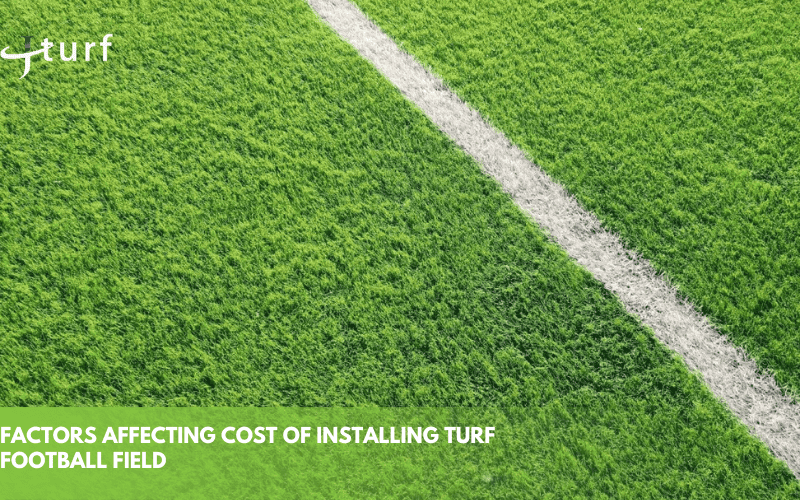
The Returns of Artificial Football Turf
Artificial turf significantly increases the number of hours a field can be used annually. Unlike natural grass, which requires recovery time, synthetic turf can handle continuous play without rest. This allows for more games, practices, and events every day, maximizing field usage.
For instance, artificial turf fields can be used for 2,500 to 3,000 hours per year, compared to 800 to 1,000 hours for natural grass. This increased usage creates more opportunities to rent the field to teams, schools, and organizations, generating additional revenue. As a result, fields with artificial turf become more profitable for sports complexes, schools, and municipalities.
Cost Savings on Maintenance
One of the major financial advantages of artificial turf is the reduction in maintenance costs. Unlike natural grass fields, which require watering, mowing, and fertilizing, synthetic turf needs much less upkeep. Here’s how it saves money:
- Watering: No irrigation needed, reducing water bills by thousands annually, especially in hot climates.
- Mowing: No mowing costs, eliminating labor, equipment, and fuel expenses.
- Fertilizing: No need for fertilizers or pesticides, saving on costly chemicals and labor.
These savings can range from $10,000 to $30,000 per year, depending on field size and location.
Artificial Turf vs Natural Grass Football Fields
When comparing the costs of artificial turf and natural grass, it’s important to consider not just the initial investment but also the ongoing maintenance and long-term expenses.
| Category | Artificial Turf | Natural Grass |
| Installation Costs | $500,000 – $1,000,000 | $200,000 – $500,000 |
| Annual Maintenance | $5,000 – $15,000 | $20,000 – $50,000 |
| Lifespan | 8 – 15 years | Requires frequent repairs |
| Replacement Costs | $350,000 – $700,000 (every 8-15 years) | Ongoing repair and re-sodding costs |
Is turf cheaper than grass?
Yes. Though the initial investment for artificial turf is generally higher, but the long-term savings can make it the more economical choice.
- Artificial Turf: The cost to install synthetic turf typically ranges between $550,000 and $1,350,000 for a standard-sized football field. Although the upfront cost is high, the ongoing maintenance is significantly lower. You will be exempt from the necessity of watering, mowing, or applying fertilizers, all of which are mandatory for natural grass. Annually, maintenance costs for artificial turf are generally around $6,000 to $10,000.
- Natural Grass: Installing a natural grass football field usually costs less upfront—typically between $400,000 and $820,000. However, the ongoing maintenance costs for natural grass are much higher. You will need to regularly mow, water, and fertilize the field, as well as manage weed growth and pest control. Over the years, the maintenance costs can range from $18,000 to $44,000 annually, depending on the climate and usage.
Artificial Turf vs Natural Grass: Longevity and Durability
One of the strongest advantages of artificial turf is its long lifespan and the reduced maintenance it requires as compared to natural grass.
- Artificial Turf: Synthetic turf fields can last anywhere from 8 to 10 years, depending on usage and how well they are maintained. In contrast to natural grass, artificial turf remains unaffected by degradation over time, regardless of weather conditions, intense usage, or inadequate maintenance. It requires minimal repairs, and with proper care, it remains playable and safe for years without the need for frequent replanting or reseeding.
- Natural Grass: Natural grass, on the other hand, is much more vulnerable to weather conditions, wear, and poor soil quality. A natural grass field can require replanting or reseeding every few years, and its lifespan is significantly shorter. Even with proper maintenance, a natural grass field can only withstand 2,000 to 3,000 hours of use per year, while artificial turf can handle 3,000 hours or more annually.
Related Reading: Artificial Turf vs Natural Grass
How long does a turf field last?
The lifespan of a turf field generally ranges from 8 to 10 years, contingent upon the level of maintenance and the intensity of its usage.
How long does it take to build a turf soccer field?
Building a turf soccer field usually takes about 2 to 3 months, including site preparation and installation.
What is the best turf for a soccer field?
Jcturf provide top-quality artificial grass designed specifically for sports fields. Our turf ensures optimal playability and durability, making it the ideal choice for soccer fields looking to enhance performance and longevity.
Want to Maximize the Return on Your Turf Football Field Investment?
Building a turf football field is a major investment, but are you fully prepared to make it pay off?
Choosing the right turf system, ensuring proper installation, and minimizing long-term maintenance are the keys to maximizing your return.
With the right choices, you can reduce annual maintenance costs, extend field lifespan to 10+ years, and unlock more revenue through extended play hours and event rentals.
At JCturf, we provide professional-grade football turf engineered for maximum durability, consistent performance, and cost efficiency.
Whether you need a new field built from scratch or a resurfacing solution, we offer tailored support to help you get the most out of your investment — both today and in the future.
Talk to our team to find the best turf solution for your project and start seeing real results.
